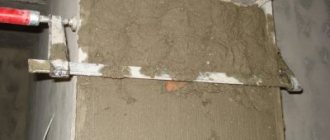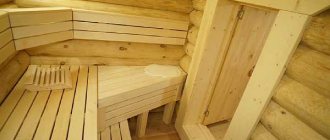Projects of old and modern multi-storey buildings do not always suit individual apartment residents. Narrow doors create discomfort and prevent the passage of large furniture. To solve the problem, widen the openings by demolishing part of the partition. There are projects with the downside of the issue - the doors are too wide. The overall sash sags on its hinges under the weight and looks ugly. To solve this problem, apartment residents begin to narrow the doorway during a major renovation.
Is changing the dimensions and location of the passage considered redevelopment?
Reducing, expanding, or moving entrance openings is legally considered redevelopment. Current legislation regulates the mandatory approval of these actions. If the location of the entrance in the supporting structures changes, approval of the redevelopment is carried out according to the sketch and reflects the changes in the BTI plan. Additionally, an expert opinion will be required confirming that the redevelopment work is safe.
Please keep in mind that unauthorized changes in the dimensions and location of doorways are an administrative offense. The culprit faces a fine and an obligation to return everything to its original state.
Why reduce the width of the doorway of an interior door?
The motive for reducing the entrance to the premises is most often the following reasons:
- unsuccessful project - the initially wide opening does not allow the installation of doors. Firstly, when open, they will take up a lot of space and limit the usable space of the room. Secondly, massive doors are a heavy structure. No matter how well their installation is done, the product will sag over time under its own weight. As a result, such doors will close worse;
- aesthetics - if the opening is combined with one of the walls of the room, the result is unattractive, cut-off trim. To exclude them, the opening is already made;
- safety factor - if the passage is connected to the wall of the room, it will be impossible to open the door 90 degrees. In this case, a protruding handle can injure a passing adult or a running child.
Differences in working with different types of doors
There are quite a few types of doors: from light plastic to heavy steel.
Aluminum or iron doors are rarely installed in the interior space, and other types are easily processed with hand tools. Almost any door made of wood, MDF or veneered canvas can be sawed to narrow or make it shorter. Except for glass. You can, of course, cut off an extra piece from a glass sheet, but it is, as a rule, made of tempered, thick glass. For this type of work you will need a special machine.
If the door is combined, for example, glass elements are inserted into a wooden frame, then such a door can be narrowed or shortened by the thickness of the wooden frame without touching the glass.
Laminated, veneered, laminated doors are very easy to saw, because they are wood processed in a special way. The same goes for plastic.
Types of doorways
There are several types of openings:
- the portal is a standard rectangular design. The perimeter is decorated with wood or plastic. Suitable for rooms with low ceilings, as it does not visually reduce the height of the walls;
Carrying out calculations and creating a layout
For a reduced opening, the following measurements are required:
- length and width of the door leaf;
- size of canopies;
- threshold height;
- door frame parameters.
To get this data, you need to understand:
- the depth of the opening should be the same as the thickness of the adjacent walls;
- the height of the opening corresponds to the height of the door frame;
- the distance between the opening and the ceiling is 1.5 cm;
- To calculate the width of the opening, you need to sum up the thickness of the frame and the width of the door leaf. Double the resulting figure;
- The gaps between the box and the wall are made equal on each side - 1 cm.
Application of wooden beams
This method is used when it is necessary to seal small gaps between the old and new passage. In order to reduce the width of the doorway as reliably as possible with timber or adjust the height, buy well-dried wood and keep it in the room for several days (so that the material gets used to the conditions of humidity and temperature and does not deform after installation).
To reduce the width of the doorway, the timber is carefully adjusted in thickness and length using a plane. The best option is to sand the wood after planing: this way the finish will adhere better to it and there will be no splinters.
The block is inserted into the seat and hammered. The plane is constantly checked against the level. The wooden insert is fixed with nails or self-tapping screws, ensuring that the cap is completely sunk into the wood. Correct selection of timber will help to reduce the height of the doorway as accurately as possible: taking into account the facing layer, its cross-section should be 2-3 cm smaller than the width of the passage. GKL or chipboard is mounted on top of the tree using self-tapping screws, and the seams are sealed with putty. After applying the primer and letting it dry completely, paint or wallpaper.
The video shows how to properly reduce a doorway. Thanks to simple technology, it is possible to easily install doors of any size (their width varies from 0.55 to 1 m) and make minor home redevelopment. Additional centimeters of the wall make it possible to place furniture that previously did not fit into the narrow space. Good luck with your renovation!
How to prepare the entrance opening for reduction
Preparatory algorithm of actions:
- dismantle the old opening - disconnect the hinges, remove the frame and trim;
- remove the remaining plaster from the working wall - the one you plan to narrow. Keep in mind that the plaster is removed completely - down to the concrete or brick;
- attach an aluminum profile to the wall;
- draw lines on both sides of it;
- take two plumb lines and draw two vertical lines;
- cut the profile into the required lengths.
How to reduce the width of a doorway: what methods exist
You can change the size of the opening yourself - everything is not as difficult as it seems. Moreover, there are several ways to do this. Let's look at them in detail.
Using drywall
If you choose drywall as the main material, work in the following order:
- carry out preparatory measures - clean the walls and prime the surfaces;
- according to preliminary measurements and calculations, cut the profile of the required size;
- secure the upper lintel of the structure with pendants. Mount the side elements directly to the end parts of the walls;
- Fix drywall to the resulting frame. Use self-tapping screws for fastening. The optimal step is 15 cm;
- fill all cracks and holes;
- Treat the finished structure with a finishing primer. Place a metal corner in the corners.
Using brickwork
When narrowing a doorway with bricks, the rows must be reinforced. For a strong connection of bricks, prepare the following composition:
- cement – 25%;
- sand – 75%.
Mix the ingredients and gradually add water. The amount of liquid is until a thick consistency is obtained. It is important to mix the solution well so that there are no lumps or clots.
Common mistakes
When working to reduce interior doors, people make a number of common mistakes that lead to weakening of the opening structure and deformation.
- When narrowing a doorway using timber, you should use only dry wood, the so-called planed timber. It is more expensive than undried. As a result, many people, trying to save money, buy raw wood. As a result, the timber cracks and deforms in the opening, sometimes completely jamming the door.
- When working with drywall, it is advisable to lay a layer of sound insulation between the walls. After all, the purpose of an interior door is to cut off sounds from the room. Basalt wool is well suited for sound insulation. Its randomly arranged fibers perfectly stop sound waves.
- When installing brick or foam block masonry, many do not install a vertical corner to support and strengthen the structure. Again for reasons of economy. You need two such corners; they are installed so that the bricks are inside the “U” shaped opening. If there are no corners, then the heavy brickwork may crack and collapse when the door slams.
- Between bricks or foam blocks it is necessary to lay steel wire with a cross-section of at least 4 mm. Even if the width of the opening being laid is less than 20 cm. If you skimp on this point, the wall will crack over time.
- You only need to cut the door leaf with a jigsaw. Moreover, the markings must be applied with a marker that is noticeable in color, and the jigsaw must have guides. The fact is that the door leaf can be up to 220–240 cm in length. It is almost impossible to manually make a straight cut of such a length.
- Before starting work on narrowing and lowering the doorway, you need to draw a sketch of the project, prepare all the necessary materials and tools. The drawing will help you carry out all installation work correctly, and timely purchase of everything you need will allow you to stay focused on the process.
The doorway can be completely reduced with your own hands. With proper preparation, this can be done easily with minimal material and physical costs. In addition, such an opening will become the pride of the owner of the house or apartment. The main thing is not to be afraid to work with your hands and head and treat everything as a creative process.
How to reduce a passage with concrete walls?
To make the doorway smaller, in a situation with concrete walls, any of the methods discussed above will do. Experts recommend using blocks.
Step-by-step instruction:
- expose the working walls to the concrete structure;
- Assess the condition of the walls - in case of severe defects, it is better to partially dismantle the damaged part immediately. The resulting wide passage is narrowed again;
- if there is electrical wiring or third-party communications in the work area, they are moved to a safe place and only after that they begin to narrow the opening according to the standard algorithm.
Is it possible to do this?
Repairs or moving are considered commonplace. In many cases, it is necessary to change the usual standards and redo the interior. Standard openings for entrance doors may vary. In some cases the opening is very wide, sometimes no doors are suitable for installation. There is only one way out - to make the front door narrower.
Reducing the front door is quite a difficult task. Every owner can do it, but this requires skills and the availability of all the necessary tools. By following the instructions, you can independently adjust the dimensions of the door leaf in width and height.
How to reduce the height of a doorway
Work algorithm:
- make markings;
- make a frame;
- strengthen the structure - secure straight hangers;
- install guides;
- insert card strips into them. Secure the structure with self-tapping screws;
- bend straight hangers towards the racks;
- Make horizontal slats from the rack profile. The side parts can be easily removed with metal scissors. Fixation - with metal screws.
Let's look at how to reduce the passage using various materials.
Using drywall
To seal the opening height, plasterboard is used if the gap between the new and old dimensions is no more than 10 cm. To fasten the material, make a frame from a metal profile. Keep in mind that the design is flexible. If the gap when opening the door is large, the structure will be deformed.
It is advisable to use drywall for arched openings. If it is necessary to strengthen the structure, the voids between the frame profile and the walls are sealed with wooden blocks or polyurethane foam.
Necessary tool
It will be easier to reduce the passage if you prepare the tools in advance. For this you need:
- hammer;
- pliers;
- sledgehammer;
- drill or hammer drill, screwdriver;
- flat and Phillips screwdrivers;
- plane;
- wood hacksaw.
Attention! The specific list of materials depends on what technique will be used to narrow the passage. You may need wooden beams, bricks, foam blocks, metal profiles, drywall, polyurethane foam, primer, putty and fasteners (bolts, anchors, metal pins, etc.).











